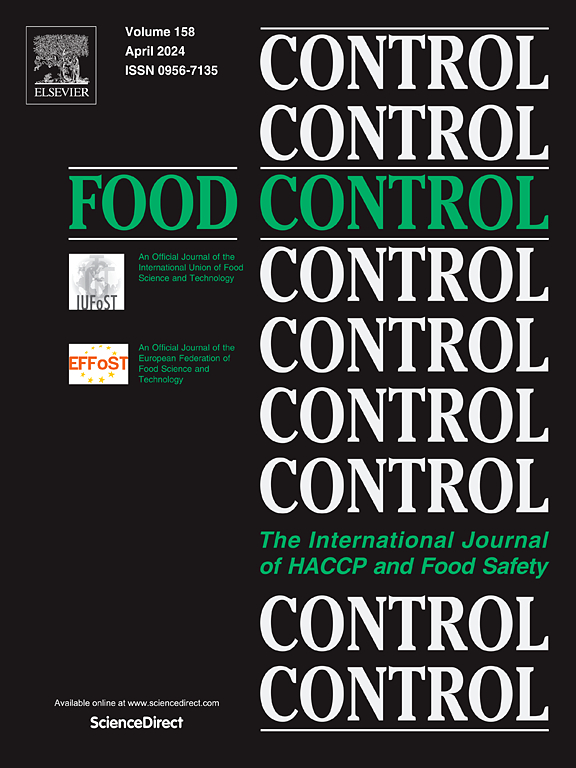Evaluation of the effect of clove essential oil as antifungal strategy in “salchichón”-type dry-cured fermented sausages
IF 5.6
1区 农林科学
Q1 FOOD SCIENCE & TECHNOLOGY
引用次数: 0
Abstract
Some of the moulds growing during the ripening of dry-cured fermented sausages produce ochratoxin A (OTA). To control its presence, the use of essential oils is gaining interest in the meat industry. The activity of different concentrations (100–1000 μL/mL) of two clove essential oils (CEOs) obtained differently (industrially and by hydrodistillation) against Penicillium nordicum was evaluated. Samples of mycelium grown over the surface of “salchichón” portions for OTA quantification and proteomic analyses were taken after the incubation 31 days, 12 °C. Chemical characterisation of essential oils and visual analysis of mycelial growth were performed. Eugenol and acetyleugenol were among the major compounds in both CEOs, despite some differences. Although CEOs inhibited mould growth in a dose-dependent manner, causing mycelial development below 25 %, OTA production was stimulated as their concentrations were increased, raising levels by up to 400 % in the case of that obtained by hydrodistillation. The proteomic profile of P. nordicum revealed that the increase in OTA generation could be due to a higher abundance of proteins related to environmental stress in the presence of CEOs, activating pathways involved in the synthesis of secondary metabolites, OTA precursors, and OTA itself. The CEOs showed slight differences in their mode of action, probably due to their different chemical compositions. The use of CEO as an antiochratoxigenic agent in the meat industry is not effective despite its ability to inhibit growth, highlighting the importance of using appropriate concentrations without stimulating the OTA production and underlining the absence of a relationship between growth and OTA accumulation.
求助全文
约1分钟内获得全文
求助全文
来源期刊

Food Control
工程技术-食品科技
CiteScore
12.20
自引率
6.70%
发文量
758
审稿时长
33 days
期刊介绍:
Food Control is an international journal that provides essential information for those involved in food safety and process control.
Food Control covers the below areas that relate to food process control or to food safety of human foods:
• Microbial food safety and antimicrobial systems
• Mycotoxins
• Hazard analysis, HACCP and food safety objectives
• Risk assessment, including microbial and chemical hazards
• Quality assurance
• Good manufacturing practices
• Food process systems design and control
• Food Packaging technology and materials in contact with foods
• Rapid methods of analysis and detection, including sensor technology
• Codes of practice, legislation and international harmonization
• Consumer issues
• Education, training and research needs.
The scope of Food Control is comprehensive and includes original research papers, authoritative reviews, short communications, comment articles that report on new developments in food control, and position papers.
 求助内容:
求助内容: 应助结果提醒方式:
应助结果提醒方式:


